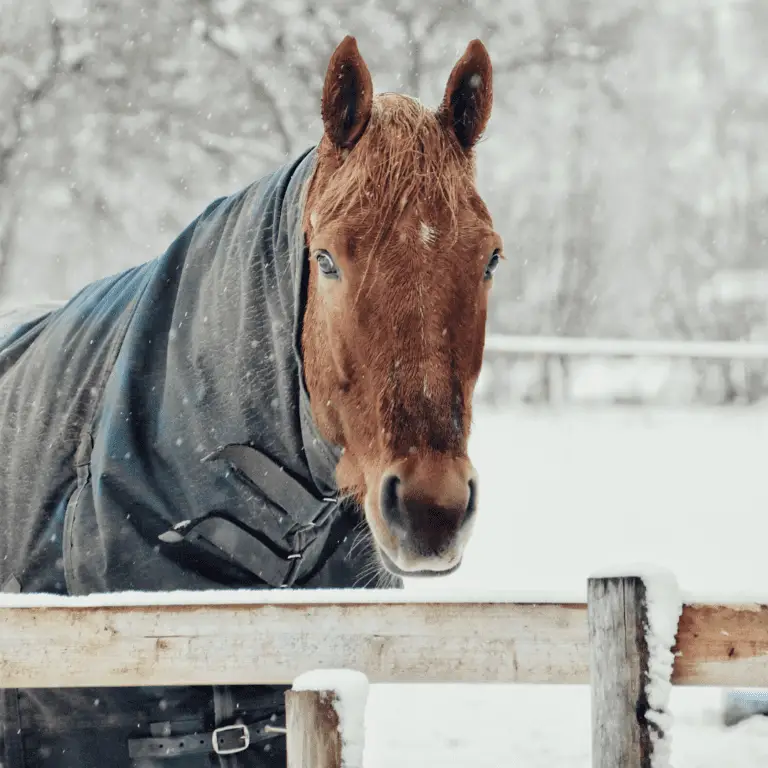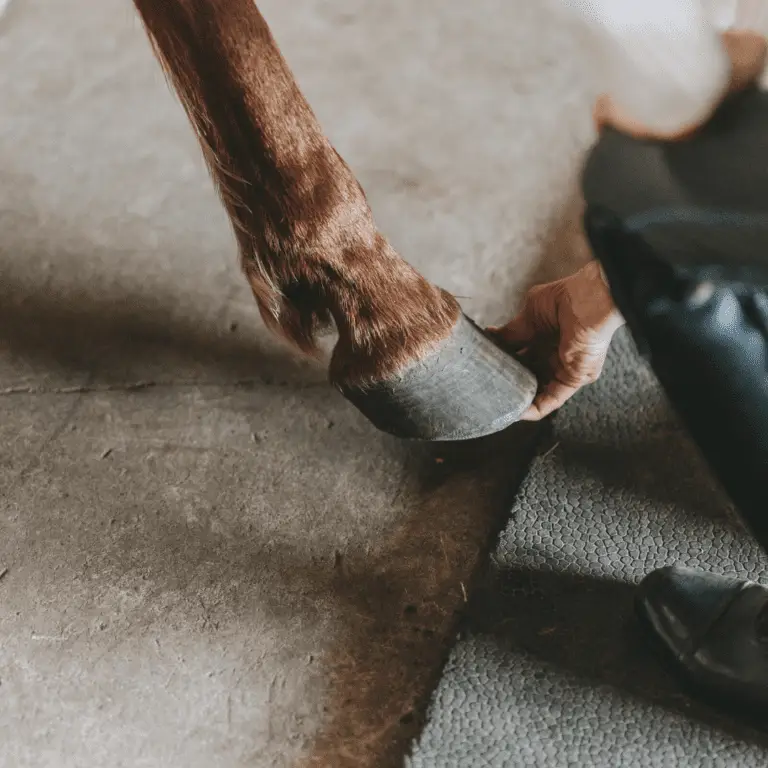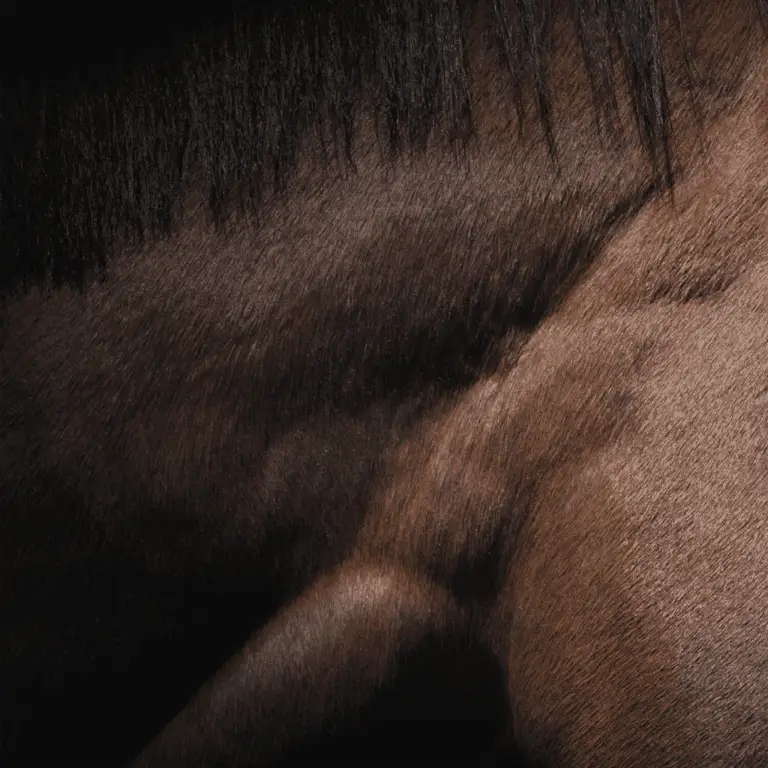
Organs of the Horse – Take a Look Inside
Just as it is with humans, the horse’s skin is the largest organ of the body. However, this blog post is dedicated to the organs that we cannot see from the outside. Let’s take a look inside the horse and

Are you over-rugging your horse out of concern?
There are key factors you should keep in mind when using blankets for your horse during winter.
During the winter season, most people automatically throw a rug on their horse, or so it seems. Certainly, the number of blanketed horses peaks during winter. However, different rugs play a role throughout the year. Heavy blankets are used in winter, fly blankets or eczema blankets in summer, and rain blankets are used throughout the year.
Each blanket has a specific function that can support your horse at the right season. In winter, the weather plays a big role in choosing the right blanket. Cold temperatures, increased rainfall and wind are some of the factors winter blankets are supposed to protect against.
It is not easy to find one solution that fits every horse when talking about blanketing. Therefore, it’s essential to look at the horse’s specific needs.
When talking about the best rug, many people only think about whether the horse is going to freeze. This thought is possibly anchored in the way humans perceive the cold. It often doesn’t consider the thermoneutral zone (TNZ), which differs from species to species. The thermoneutral zone is also called the comfort zone and describes the temperature range in which a living being feels comfortable in relation to the ambient temperature, since the heat generated remains constant and no energy needs to be expended for more heat or cooling.
If we look at the thermoneutral zone (TNZ) of an unclothed human being, which is approximately between 25 to 32 °C (77-90 °F), we can see that a human being without clothing starts to freeze at approx. below 25 °C (77 °F) already and thus has to produce more heat. In horses, on the other hand, the TNZ is approximately between -15 to 25 °C (5 to 77 °F). This means that horses have a much higher tolerance to cold than to heat. In marine west coast, humid continental and mediterranean zones, horses therefore tend to be too warm in summer rather than freezing in winter. This shows that if you rely on your own temperature sensation when covering your horse, you can easily choose a blanket that’s too warm. Overheating can be a massive strain for the horse and can lead to circulatory problems or even circulatory failure. So it is important not to forget that a rug can influence the horse’s natural thermoregulation.
Kim Hodgess, a master’s student from England, has taken up the subject and studied the effect of different horse rugs on the horse’s body temperature. In her study, horses that wore an eczema blanket, a fleece blanket, a light-weight blanket and horses that did not wear a blanket were compared in terms of their skin temperature. For the measurement, a temperature sensor was attached to each horse in the hip area, which measured the surface temperature. In addition, the temperature was recorded in order to subsequently understand the changes at different temperatures. The study showed a temperature increase of 4.2°C (40 °F) for horses wearing an eczema blanket, 11.2°C (52 °F) for horses wearing a fleece blanket, and 15.8°C (60 °F) for horses wearing a light-weight blanket. At an ambient temperature of 4-5°C (39 – 41 °F), four of the blanketed horses had a surface temperature of 24-30°C (75.2 – 86 °F) while the non-blanketed horses had a surface temperature of 12.5-18.5°C (54.5 – 65.3 °F). The results were able to show that blanketed horses can have a significant increase in their skin temperature. This warmth is even above the temperature that is comfortable for them.
The use of rugs can be useful in many circumstances but factors such as age, size, temperament, breed, the stabling, body condition and whether the horse is clipped or not influence the choice for the right blanket.
For example, horses that have no possibility to find shelter when they are out on the field can be additionally protected from continuous rain by a rain blanket. If your horse is clipped, thermoregulation is altered so a blanket can compensate for missing fur after clipping and thus support thermoregulation.
Thick coated breeds that thrive in cold regions, such as icelandic horses, fjords or Finn horses will almost never benefit from rugging.
Once you have decided to use a rug, you have stick with to your decision, at least for the current winter. Always keep in mind that your horse’s thermoneutral zone is not yours! Even though you may be freezing, your horse might be just fine. If you are uncertain on which rug is suitable for which weather and would rather play it safe, try using a blanket sensor. This will show you the temperature and humidity under the blanket and can help you decide which blanket is right for your horse. Several companies already make these blanket sensors, including “Horseware Horsepal” and “Arioneo Orscana”.
In the case of rugging, less is often more!


Just as it is with humans, the horse’s skin is the largest organ of the body. However, this blog post is dedicated to the organs that we cannot see from the outside. Let’s take a look inside the horse and

Horses are sturdy creatures, but they can be sensitive to extreme weather conditions. Here you can read about the impact of temperature and humidity on your horse and what measures to take to ensure your horse’s well-being. What You Need

Are you over-rugging your horse out of concern? There are key factors you should keep in mind when using blankets for your horse during winter. During the winter season, most people automatically throw a rug on their horse, or so

Going barefoot refers to the practice of keeping horses without horseshoes, allowing them to walk and run on natural surfaces with their hooves unprotected by metal shoes. This practice is based on the idea that horses evolved to have hooves

Here’s how you can help your horse When the days start to get longer and spring arrives, we throw our thick winter coats into the basement and wait for the warmer weather. While we are ready for the change in

Watery eyes, discharge from the ears, swelling or gum colour give you information about possible infections or injuries. In this blog post you can read how to interpret these symptoms. What You Need to Know About the Horse Head Discharge